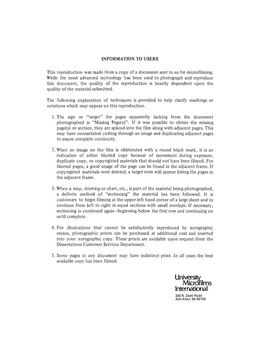| dc.contributor.author | England, Robert E. | en_US |
| dc.date.accessioned | 2013-08-16T12:28:34Z | |
| dc.date.available | 2013-08-16T12:28:34Z | |
| dc.date.issued | 1982 | en_US |
| dc.identifier.uri | https://hdl.handle.net/11244/4999 | |
| dc.description.abstract | A preliminary examination of desegregation techniques revealed that among elementary schools the combination of pairing and clustering with rezoning proved most successful in reducing racial isolation (operationalized as a change in the index of dissimilarity). For secondary schools the most effective technique was rezoning. These two techniques were associated, in the bivariate case, with the lowest amount of white enrollment loss as well. A multiple regression analysis also showed the most effective desegregation technique to be of some importance (although not statistically significant) in achieving desegregation success when various external, community, and district level forces were taken into account. In the multivariate case, the specific technique was of greater import at the elementary than the secondary level. Other features of the desegregation process, especially support by school officials, were important predictors of desegregation success as well, although the most powerful forces were federal coercion (positive) and size of district (negative). A multivariate analysis of white enrollment change for these 52 districts confirmed recent research that school desegregation does produce a significant one-time decline in white student enrollment. The most important predictor of white student withdrawal was percentage black in the school system. | en_US |
| dc.description.abstract | The research concludes that desegregation process variables are important contributors to desegregation success, and certain desegregation techniques may work better than others. | en_US |
| dc.description.abstract | Employing a relatively new data collection and aggregation method known as the case survey method and a theoretical framework that conceptualizes school desegregation as a public policy that must be implemented at the local level, an attempt is made to assess the impact of three types of influence--external forces, school district characteristics, and desegregation process variables (including desegregation strategies)--on two school desegregation outcomes: the success of school districts in ending racial isolation (desegregation success) and white enrollment decline (generally referred to as "white flight"). | en_US |
| dc.format.extent | ix, 273 leaves : | en_US |
| dc.subject | Political Science, General. | en_US |
| dc.title | Assessing the status of urban public school desegregation : | en_US |
| dc.type | Thesis | en_US |
| dc.thesis.degree | Ph.D. | en_US |
| dc.thesis.degreeDiscipline | Department of Political Science | en_US |
| dc.note | Source: Dissertation Abstracts International, Volume: 43-05, Section: A, page: 1668. | en_US |
| ou.identifier | (UMI)AAI8224192 | en_US |
| ou.group | College of Arts and Sciences::Department of Political Science | |
